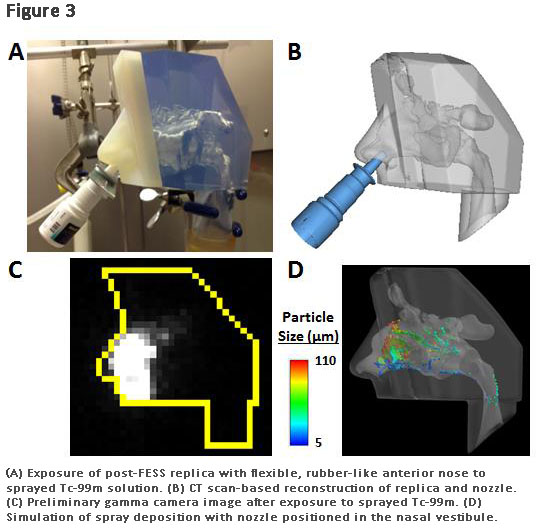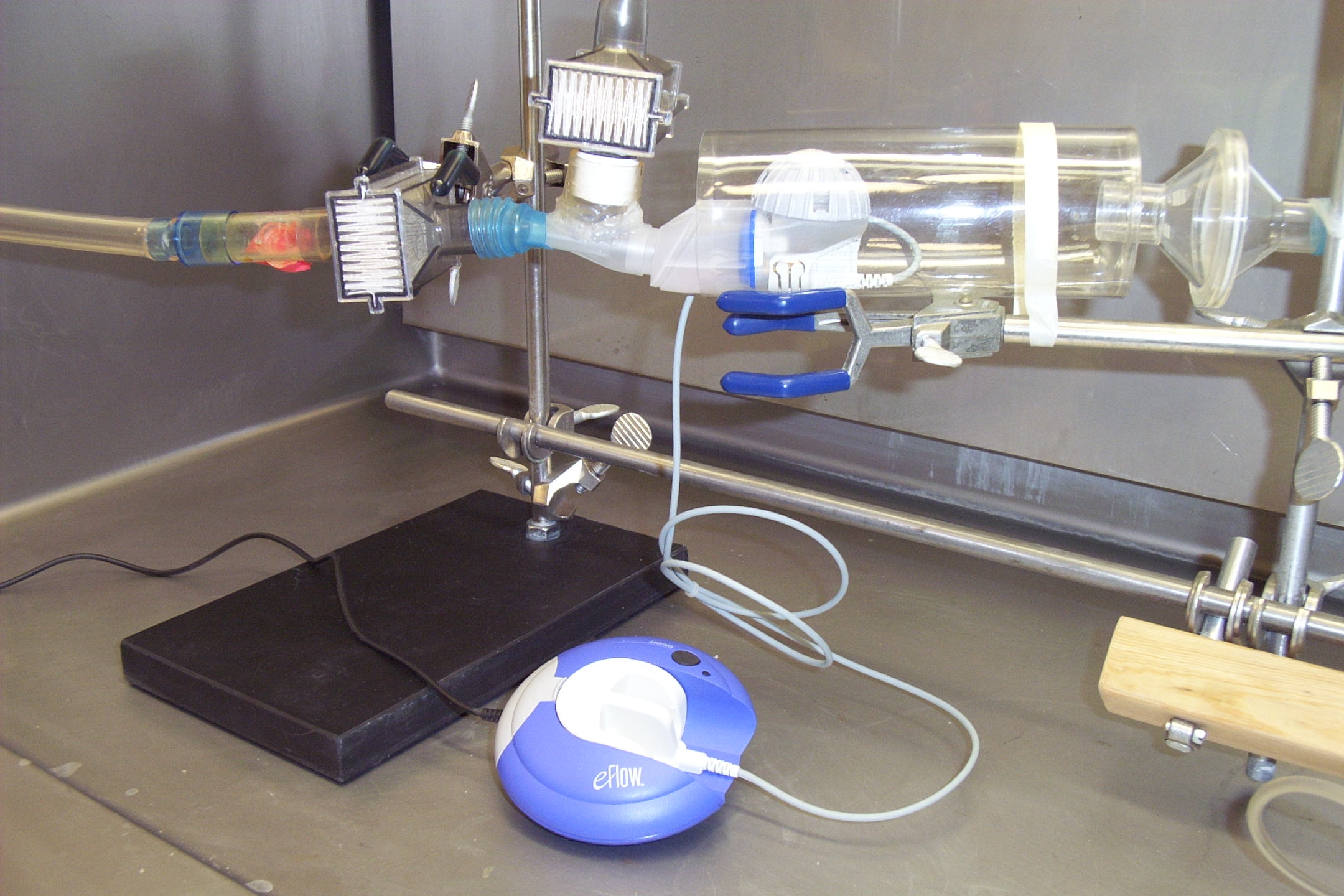Bench Research Studies
Improving Topical Drug Delivery for Treatment of Chronic Rhinosinusitis (CRS)
(Funded by NIH – In Collaboration With Dr. Julie Kimbell, UNC Dept Of ENT)
The long-term objective of the proposed research is to fundamentally improve CRS treatment by optimizing medical treatment, specifically, maximizing topical drug delivery in areas of the sinonasal cavity affected by CRS.
To test the ability of gamma scintigraphy to detect activity through the stereolithography material Watershed® (DSM Somos®, Elgin, IL), we constructed a hollow plastic model using 3D printing with Watershed® from the post-surgery CT scan of a male subject with bilateral FESS from a previous pilot study. The hollow model was exposed to a nebulized solution of sodium pertechnetate-99 (99mTc) in normal saline (9μm droplets emitted from a PARI LL nebulizer, Starnberg, Germany) while undergoing steady 10 L/min airflow in the inspiratory direction and imaged using a gamma camera. Activity was detected in both maxillary sinuses, similar to our CFD simulation of nebulized particle deposition in the same geometry. The gamma activity was quantified by region-of-interest analysis using ImageJ software as 4.2% of total activity passing through the model, compared with 1.6% predicted, indicating the feasibility of this method for refinement of deposition predictions by CFD models.
scintigraphy to detect activity through the stereolithography material Watershed® (DSM Somos®, Elgin, IL), we constructed a hollow plastic model using 3D printing with Watershed® from the post-surgery CT scan of a male subject with bilateral FESS from a previous pilot study. The hollow model was exposed to a nebulized solution of sodium pertechnetate-99 (99mTc) in normal saline (9μm droplets emitted from a PARI LL nebulizer, Starnberg, Germany) while undergoing steady 10 L/min airflow in the inspiratory direction and imaged using a gamma camera. Activity was detected in both maxillary sinuses, similar to our CFD simulation of nebulized particle deposition in the same geometry. The gamma activity was quantified by region-of-interest analysis using ImageJ software as 4.2% of total activity passing through the model, compared with 1.6% predicted, indicating the feasibility of this method for refinement of deposition predictions by CFD models.
To test these methods for sprayed droplets, we made a new version of this replica in which the posterior cavity was printed in Watershed® and the anterior cavity was printed in a flexible, rubber-like material (Fig. 3A). Using the Methods for Aim 1 below and a CT scan of the nasal replica with a spray nozzle (Nasacort® OTC) in a specified position, a 3D reconstruction was made of the replica with the nozzle (Fig. 3B). Preliminary gamma images of 99mTc solution sprayed into the replica from a Nasacort bottle in a similar position showed anterior nasal cavity deposition (Fig. 3C), as did a spray simulation (Fig. 3D) based on the same geometry. These studies demonstrate our ability to use CFD and gamma scintigraphy methods to compare simulations with experimental deposition for sprayed droplets.
Output Characteristics of the eFlow Electronic Tobramycin Nebulizer System by Radiolabeling Techniques
To advise physicians/pharmacists, whose patients may be using the eFlow, it is necessary to determine the number of volume fills and delivery times for the eFlow to match the respirable dose of the 1.5 ml of 100mg/ml tobramycin fill of a jet nebulizer. The goal is to deliver an equivalent respirable dose of tobramycin to that previously delivered by jet nebulizers. (Link to Tiffin et al)
